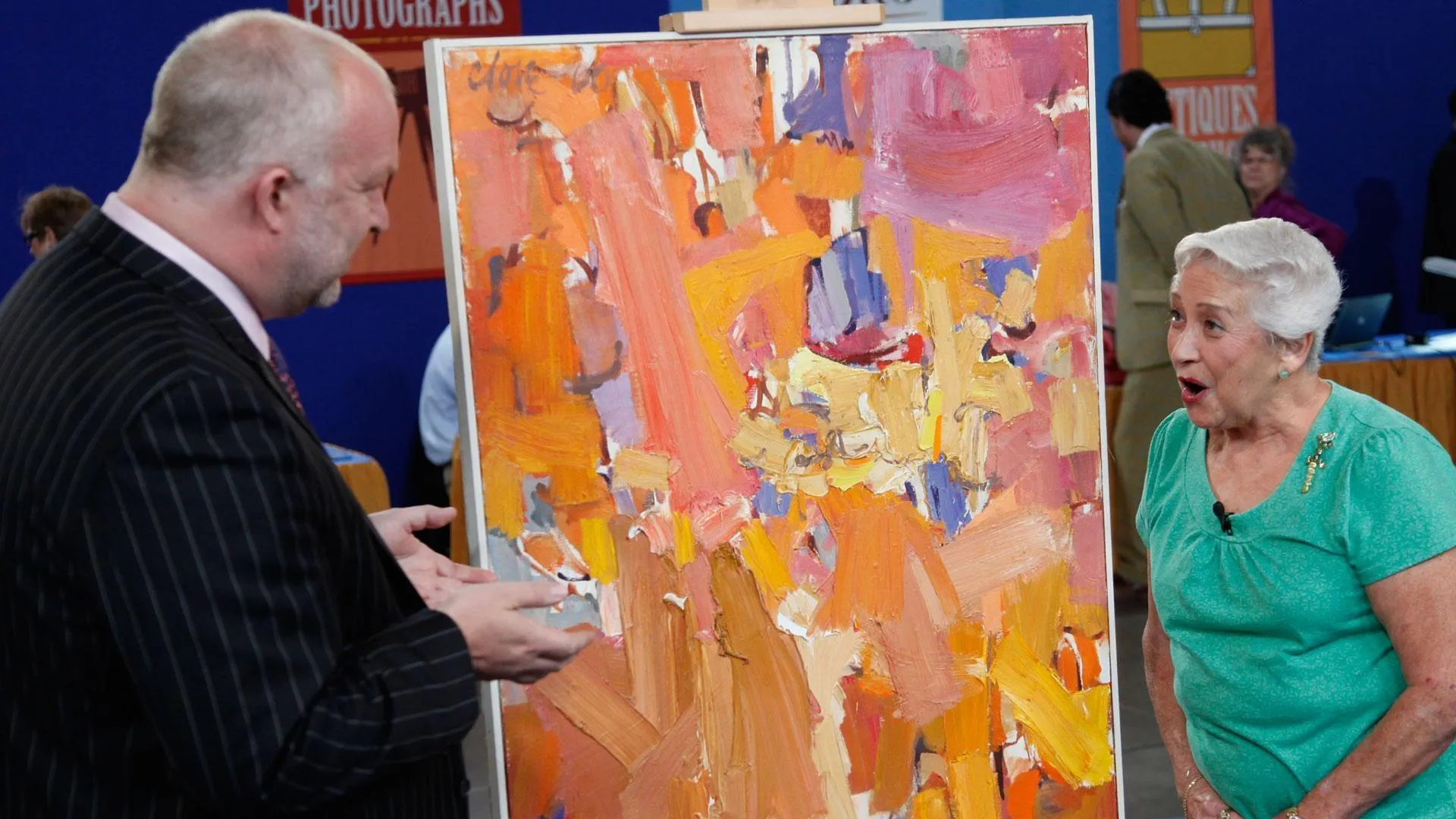GUEST: I was at an auction in Missouri in the early '70s. They had the hall tree and I thought I would like it. My husband was standing in the back row and I could hear him say, "Who in the world would bid on that one?" And it was me. (laughing)
APPRAISER: One of the things I love about this hall tree is the fact that the back is open. Most of the time they have a big mirror on 'em. In America, the hall tree was introduced a little bit later than it was in England. Did you know that this was English?
GUEST: No.
APPRAISER: Most people would look at something like this and assume that it would be later in the 19th century, like the 1870s or the 1880s. But this is actually before 1850.
GUEST: Oh, it is?
APPRAISER: Yeah, it's probably 1830s or '40s, and the reason that I knew that was the overall design, the quality of the carving. If you look at those toes and those feet you know right off the bat that those are hand carved. The whole leg is hand carved, as well as these little foliate decorations right above the knees. And the reason I think these became so popular was because they were so useful. You have these great places to put your umbrella when you come in so it doesn't drip on the floor. The marble top...
GUEST: Yeah.
APPRAISER:...which is, I would assume, probably original. It's got a little bit of wear on it.
GUEST: Yeah, it's original.
APPRAISER: And you've got a drawer here that you can put your gloves in. And one of the characteristics of this that made it English, besides the overall look, was the fact that the secondary wood is very thin compared to what we did in America. And also it's mahogany. And in America, we would have used a much softer wood for the secondary wood.
GUEST: Oh, I see.
APPRAISER: The primary wood on this is walnut. It's got a few places where it's been repaired.
GUEST: Yes.
APPRAISER: On the hat rack.
GUEST: We've moved it several times.
APPRAISER: Well, you know what? That doesn't matter. It's more important that it's the original hooks. Well, if I was this old, I'd be having dings and things like this also. What did you pay for it when you got it at the auction?
GUEST: About $350.
APPRAISER: In my opinion, a good insurance value for this would be $5,000.
GUEST: Okay, that sounds good.
APPRAISER: And if you were to put it in an auction, you want to estimate it $2,000 to $3,000, but I think it could take off up there towards that insurance value. So, get it insured for about $5,000?
GUEST: Yeah. Okay, that sounds good.



